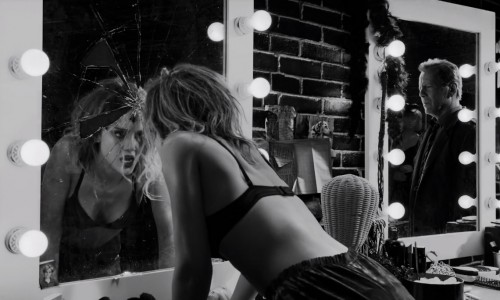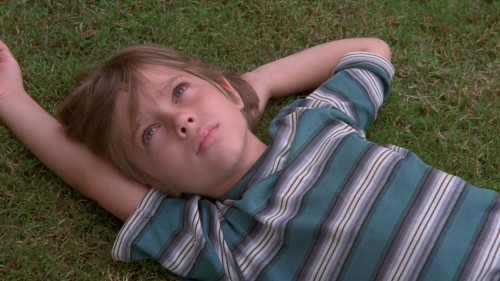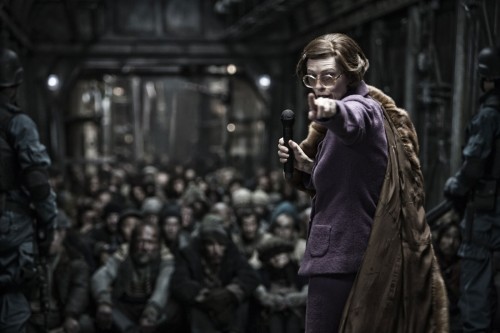By Greg Popil
In 2005, Robert Rodriguez and Frank Miller teamed up to co-direct an adaptation of Miller’s graphic novel “Sin City” and created what many people felt was an evolution in film itself. Taking digital film and green-screen sets to their logical extreme, Rodriguez and Miller created a hard-R dream world, a neo-noir anthology of honorable thugs, corrupt villains, vigilante prostitutes and evil politicians, set in a city that looked every bit as exotic and hyper-real as Middle Earth or the planets of the Star Wars series. It was easy to imagine that you were glimpsing the very future of film.
Nine years removed from “Sin City’s” debut, that future has yet to materialize. A few movies, like the adaptation of Miller’s “300,” employed the mostly digital sets, but practical effects have been making a surprising comeback in recent years, as anyone who has been watching the sneak peeks at the new Star Wars movie can attest. As to the R-rated material, comic book movies, with Marvel leading the charge, have leaned towards family-friendly, PG-13 tales. “Sin City,” which looked so much like the wave of the future, has instead become an outlier.
Into that semi-analog, PG-13 world drops “Sin City: A Dame to Kill For,” Rodriguez and Miller’s long-delayed follow-up that now feels less like a sequel than a dirge, an alternately sad, angry, repulsive and awesome final trip back into Miller’s comic book dystopia. No one is saying this will be the final installment, of course, but the palpable lack of enthusiasm on the creators’ part doesn’t bode well. Like the previous film, “Dame” opens with a brief prologue that has very little to do with the rest of the movie, then splits into three hard-boiled tales of do-(semi) gooders taking on the city’s most powerful and corrupt, largely represented once again by Powers Boothe as Senator Roark.
The first story, featuring Joseph Gordon-Levitt as Johnny, a hotshot gambler with an unhealthy interest in beating Roark at poker, is the dullest of the three. Gordon-Levitt, a wonderfully naturalistic actor in his best roles, can’t handle the fifth-rate Phillip Marlowe clichés in Miller’s script (“Sin City’s where you go in with your eyes open…or you don’t come out at all.”), and the entire arc of his story amounts to nothing when it is revealed how little of a plan the supposedly smooth character had all along.
As uninteresting as Johnny’s story is, at least it’s something we haven’t seen before: Johnny is the only major character not held over from the previous film. Every segment heavily features the homicidal yet strangely kind Marv (Mickey Rourke), despite his character having been killed in the previous film (this one is sort of a prequel, except everyone looks a lot older, which only adds to the confusion). For a movie that, as an ostensible anthology, could go anywhere and tell any number of stories, this is an unfortunately conservative attitude. In the second segment Marv teams up with Dwight McCarthy (Josh Brolin, ably taking over for Clive Owen) to help save Dwight’s ex flame (Eva Green) from her possibly sinister husband. Green’s character is the most loathsome element of the film, alternately a damsel desperately in need of a man’s help or an evil temptress, luring “good” men into her web to perform unspeakable acts. Miller’s attitude towards women could charitably be called unenlightened, and Green’s character represents the worst of this.
The best and final segment concerns Nancy (Jessica Alba), exotic dancer and survivor of a vicious assault in the first movie by Rourke’s son. She was saved by Detective Hartigan (Bruce Willis), and her survivor’s guilt has led her into a downward spiral of drinking, self-mutilation and plotting the murder of Roark to avenge Hartigan. Alba is the movie’s most pleasant surprise: never the best actress, she and Rodriguez have clearly built a rapport (this is their fifth movie together; the original “Sin City” was their first), and she clearly trusts Rodriguez enough to allow her character to go into some genuinely dark places. The overly stylized dialogue has the opposite effect on Alba as it does on Gordon-Levitt: he could easily out-act her in a vacuum, but her less natural line readings allow Miller’s whoppers to go down more smoothly.
A palpable sense of anger hangs over the film: no one other than Marv seems to be having much fun. Characters like Rosario Dawson’s prostitute vigilante seemed to be having the time of their lives in the first film: now they just seem to be going through the motions. Perhaps it’s the creators’ way of venting: Rodriguez’s once promising directing career has stagnated, and Miller’s reputation took a sharp turn off a cliff in recent years. Maybe in another decade they can take a return trip to Sin City, and recapture the sense of sick joy and discovery that made the original film such a blast.
Rating: 40/81




Leave a Reply